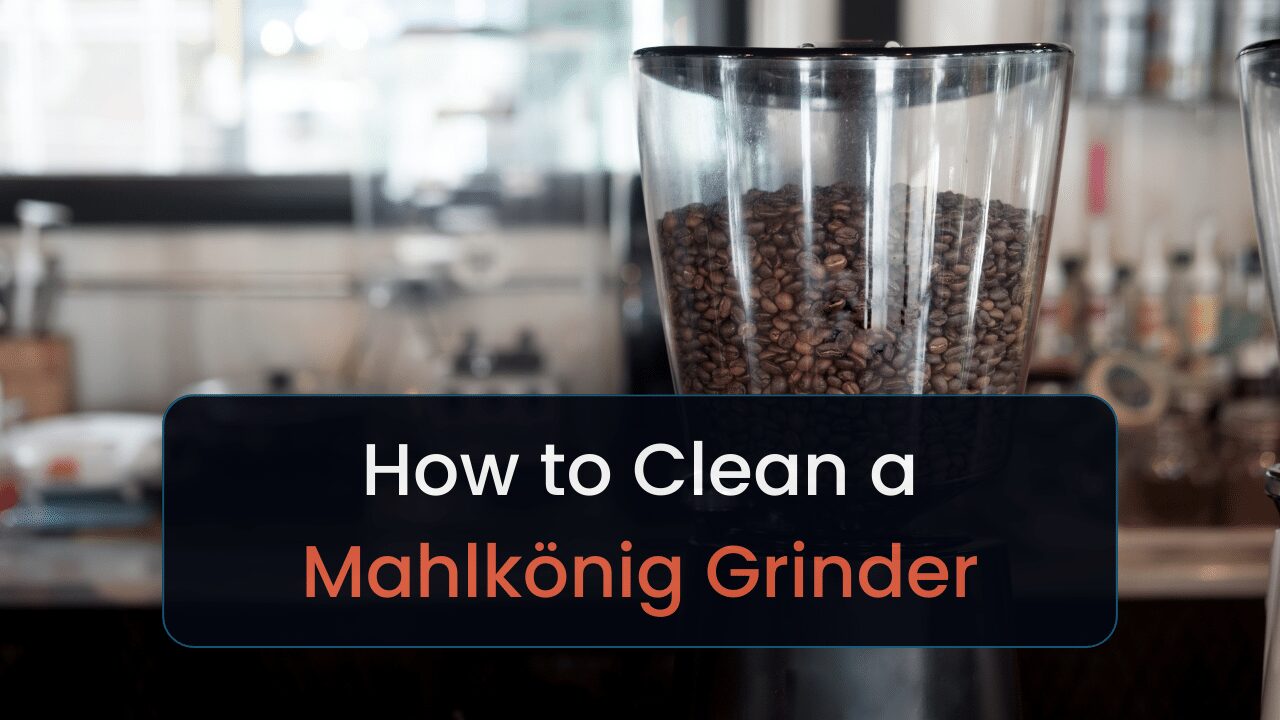I want to make the best coffee drinks. Understanding what frothed milk is and how it works is a great step toward helping me (and you) get there. I provided all the information to help you create the best-frothed milk.
To achieve this goal, I’ll cover these points:
- What frothed milk is
- Types of milk you can froth (and the best type)
- How to froth milk & what you’ll need
- What you could use frothed milk for
- Frothed vs. steamed milk
Let’s froth some milk.
Key Takeaways
- Frothed milk is aerated milk
- It’s difficult to froth dairy-free milk because of lack of protein & fat
- Froth milk using a frother or manual tools like a whisk
- Use frothed milk in drinks like lattes & cappuccinos
What Is Frothed Milk?
Frothed milk is aerated milk that creates a foamy and light texture for your drink. The frothing process makes the milk taste sweeter. Various factors affecting your milk froth’s longevity will depend on the type of milk used and whether you heat it.
For instance, skim milk will create a drier froth. Whereas, whole milk forms a richer foam.
To determine whether you have a high-quality foam, you want it fluffy and dense.
But how does milk frothing work?
Whatever tool you use will steam or whip your milk to create a foam. It’s not the same as whipped cream, though. As it’s thicker and can hold its shape better. I wouldn’t want to try to lather frothed milk on a pie.
Earlier, I mentioned, “aerated.” That means you’ll add air to the milk, which causes it to create bubbles and expand.
What Is Frothed Chilled Milk?
Chilled frothed milk refers to the milk you don’t heat during aeration. It’s an excellent topping for cold brews and iced coffees.
You’ll usually have frothed chilled milk if you have a specific milk frother that offers such an option. Or if you use a blender or whisk to froth your milk.
What Kind of Milk Can You Froth?
Let’s compare the different types of froth(able) milk:
- Whole (full fat) milk: this is the best milk for frothing since it has the highest fat & protein content
- The higher fat content makes milk taste richer
- Semi- or Skimmed milk: less fat & protein, but still provides a decent amount of both nutrients
- You’ll have fewer bubbles, thicker foam, & less of a creamy taste
- Almond, soy, hemp, coconut, or oat milk: you’ll have much less froth than other options
Lactose and organic milk aren’t ideal to use for frothing. They’re ultra-pasteurized, which means they don’t have any more proteins [1]. And without proteins, you don’t have bubbles.
Regarding other non-dairy milk:
I’ve heard of many folks having difficulty trying to froth nut milk. Since you’re trying to froth something with a consistency close to water. Some have added soy lecithin powder to their non-dairy milk and found more success with frothing.
Since lecithin is an emulsifier that’s ideal for making foams [2].
I haven’t tested this. Nor could I find any measurements on how much lecithin to add. I could only find “add a small amount.” Very specific…
I couldn’t find a specific frother to use for frothing dairy-free milk. However, I couldn’t imagine frothers would have features that could make it manipulate the fat and protein content in these types of milk.
How Do You Froth Milk?
To create the best foam with your milk, follow these steps:
- Fill the pitcher until the milk is below where the spout level forms (look for the indent)
- You’ll fill it around 5–6 oz (147–177 ml)
- Flip the “steam” switch if you’re using a frother machine
- Purge your steam wand immediately before steaming
- This removes water stuck in the steaming circuit
- Find the right position for your steam wand
- Insert the steam tip just below your milk’s surface
- Turn on the steamer & insert the steam wand deeper until you hear rips, which means you’re spitting air into your milk
- How you’ll proceed from hereon depends on whether you want a cappuccino or latte, I’ll cover details in the next paragraph
- Cut off the steam once you reach a desired temperature with the steam wand still in the milk
- Pull out the wand & wipe the milk off
- Otherwise, milk will cake on your wand and cause issues later
- Purse your steam wand again
Let’s rewind to point 4 B.
For a cappuccino, keep the wand in the same spot and keep the foam ripping air until the volume increases to what you want.
For a latte, position the rod until milk rolls around the wand. “Rolling” will help break up larger bubbles and create a finer foam.
Tips:
Ensure you use the freshest milk possible when frothing. Dairy in the fridge for weeks may not foam as well as fresh-bought milk. Also, using the coldest milk possible will help give you more time to work with your milk. And it allows for better aeration.
Take this a step further by using a cold pitcher as well. Many folks will leave their pitchers in the freezer.
Ensure your milk’s temperature is between 135 and 150 °F (57–66 °C). That’s when milk is at its sweetest. Go any higher than that, and your foam will lose flavor. Go above 175 °F (79 °C), and you’ll scald your milk.
I recommend using a frothing thermometer to monitor your milk’s temperature. And turn off the steamer before your thermometer gets too high. Because your thermometer may have lag.
Upon turning off the steamer, your thermometer will take a couple of seconds to catch up and provide an accurate temperature.
You may notice an increase of up to 10 °F (-12 °C) after turning off your steamer.
What Do You Need to Froth Milk?
To froth milk, you’ll need an electric milk frother or a manual tool, a 12 oz (350 ml) pitcher, and milk. I’ll discuss manual tools and how to use them in the next section.
As for your milk selection:
Aim for full-fat milk (2%). If that’s not possible because of diet restrictions/choices, shoot for oat, almond, or soy milk. However, you’ll have trouble frothing dairy alternatives. As I mentioned, using Lecithin will help milk froth better.
A source tested various kinds of milk and found that most produce similar froth. For the most part. It appears oat milk had the best froth quality [3]. But macadamia milk had the best taste.
How to Froth Milk Without a Frother
To froth your milk without a frother, follow these steps:
- Heat your milk
- Pour some into a microwave and heat it in 15-second increments
- Heat your milk on a stove top until it begins steaming & forming bubbles
- Use a manual frother method to froth your milk
- Electric mixer: whisk the milk at a low- or medium speed until foam forms
- Immersion blender: stick the head of the blender in your milk and blend until foam forms
- Whisk: whisk your milk back & forth until seeing foam
- Mason jar: pour your milk into the jar, rattle it for 30 seconds, remove the jar’s lid, & microwave the jar for 30 seconds
- French press: pulling up the plunger will increase your milk’s volume
The same instructions apply to all types of milk (including dairy-free).
What Froth Milk Is Used For?
Here are some coffee drinks and other things you could use frothed milk for:
| Cappuccinos | Latte | Café au lait |
| Dalgona coffee | Flavored cold brews | Matcha latte or dalgona |
| Whipped cream | Macchiato | Chai latte |
Many also use frothed milk for latte art. As it creates a thick layer of foam for a latte artist to work their magic. However, steamed milk works better for latte art due to the microfoam it produces.
Let’s cover the differences between these types of milk.
Frothed Milk vs. Steamed Milk
Steamed milk:
- Microfoam
- Never cold
- Velvety texture
Frothed milk:
- Larger bubbles; more volume
- Thicker foam
- Comes in hot & cold
Steamed milk aerates the milk more to where it’ll create smaller bubbles. This interaction results in a smooth microfoam ideal for a latte and latte art. And it requires using a steam wand. Whereas, you could use various methods to froth milk.
Frothed milk has a thick foam.
You won’t find any cost differences between making the two.
FAQs
Keep reading to find frequently asked questions around frothed milk.
Can You Froth Cold Milk?
You can froth cold milk.
Why Do You Froth Milk for Coffee?
People froth milk because the dense foam adds a creamy texture to drinks. Frothed milk also makes drinks taste sweeter.
Does Frothed Milk Cause Gas?
Frothed milk can cause gas if you’re sensitive to lactose. Or whatever type of milk you’re using.
How Do You Store Frothed Milk?
You can’t store frothed milk since bubbles begin to collapse after 2–3 minutes.
Wrapping Up
Frothed milk is the result of adding air to milk. Baristas and coffee lovers use it for creating drinks like cappuccinos, lattes, macchiatos, and more. It’s not the same as steamed milk. As the latter has a more velvety texture and finer bubbles.
To make the best coffee, you’ll need a good coffee maker. We’ve compared various coffee makers to help you get started.






